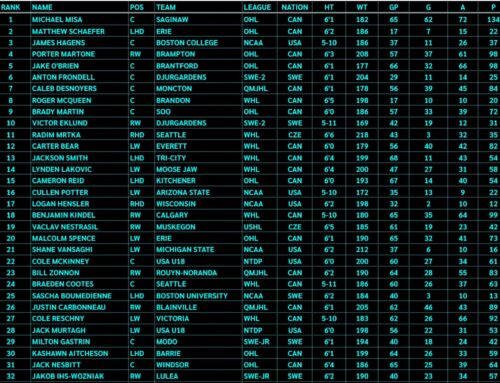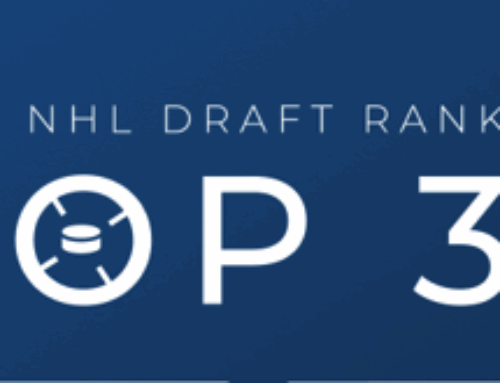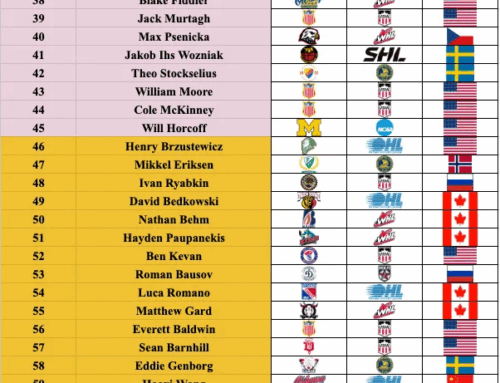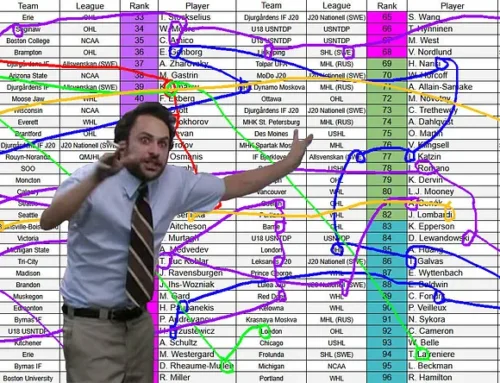Joel Blomqvist and Calle Clang are the Penguins’ Goaltenders of the Future
Kyle Watson
2021-07-01
The Pittsburgh Penguins turned a lot of heads last year when they used their first two picks in the 2020 NHL Draft to select two goaltenders. However, with one year of hindsight, picking Joel Blomqvist at 52nd overall and Calle Clang 77th looks like it was a good idea.
Although the Penguins prospect pool is pretty shallow in every position, goaltending was certainly the area that needed the most help. They haven’t drafted a goalie since 2016 and arguably didn’t have a prospect who projects as a starter in the NHL. Now, they might just have two.
Blomqvist, who was actually selected ten picks after where DobberProspects had him ranked, came with a great international resume and had found success at all levels of junior hockey in Finland. He also brought impressive size at 6-foot-2, 183 pounds
Clang brought the same things to the table, standing at 6-foot-2, 176 pounds and enduring a similar development path in Sweden.
In their first pro seasons, Blomqvist and Clang progressed very well. They both found themselves on loan in the minors, but stood out on weaker teams. Six months after being drafted, they are already two of Pittsburgh’s very best prospects.
I thought I would take a look at both of their seasons and explain why the future looks bright in the Penguins crease.
Joel Blomqvist – Hermes – 6-4-6
As a member of the Kärpät system, Blomqvist played three games with the U20 team this season and two in Liiga. However, he spent the majority of the campaign in Mestis on loan with Hermes, starting 16 regular season games and nine in the playoffs.
I tracked four games of Blomqvist’s season: one in Liiga, a quarter-finals matchup in Mestis and two games of the Mestis playoff finals.
The first thing I noticed watching Blomqvist is how poised he looks in the net.
DobberProspects’ resident goaltending expert Danny Tiffany said in our final 2020 Draft Rankings that “it’s hard to find a better positional goaltender than Blomqvist.”
I couldn’t agree more.
The Finn rarely had to stretch or dive to make a save in any of the games I watched. He covered the net efficiently by sitting back in the crease and relying on excellent lateral movement to make saves.
In the Liiga game, he made this stop through traffic:
You can see he opts to move laterally using the butterfly slide, rather than remaining on his feet and t-pushing to the shooter. This is is typical of a butterfly goalie and probably the quickest route for a goalie like Blomqvist.
Here is another good example of his mobility:
After finishing in ninth place, Blomqvist’s team in Mestis, Hermes, went on a Cinderella run in the playoffs. They progressed through the wild-card round and then proceeded to sweep the number one and two seeds before losing to the number three seed in the finals.
Heading into the playoffs, it was not clear whether Blomqvist or 23-year-old Vilho Heikkinen would start in net. However, after stopping 29 of 30 shots in the clinching game of the quarter-finals, Blomqvist took over the crease for the final seven matches.
Hermes faced off against Ketterä in the finals, a team that boasted four of the top-10 scorers in the league. The games were end-to-end, high-scoring affairs – but he majority of the goals Blomqvist conceded weren’t necessarily his fault. They were tip-ins, tic-tac-toes and breakaways. In fact, I would say there were more occasions where Blomqvist saved the game than let his team down.
For instance, here he is fending off an offensive onslaught to keep his team within one goal:
Notice how he drops into the reverse vertical-horizontal as his opponent walks in, allowing him to launch off the post and get across and make the save. He also does a good job of making himself big to cover the top part of the net and tracks the puck well in the scramble to kill the play.
His team would go on to score twice late in the game and win 3-2.
The only recurring issue I noticed in Blomqvist’s game was a tendency to overcommit to the shooter and lose track of his angles.
In this instance, he was still able to get across to meet the shooter and make the save (and the second save):
I was also impressed by his ability to keep his butterfly tight and remain upright, rather than having to sprawl out. However, he still did have to rely on his reflexes more than he usually does.
He wasn’t as fortunate in this example. He comes past his post on the shuffle and leaves the left side of the net open:
He is only 19, though, and very much still a work-in-progress. There is plenty of time to work out the few kinks in his game. In my opinion, Blomqvist has shown he is ready for the next step: a permanent spot with Kärpät in Liiga. He is set to split the net with fellow 2020 pick Leevi Meriläinen next season in Finland’s top league.
Calle Clang – Kristianstads IK – 13-19-0
Despite being a later pick than Blomqvist, Calle Clang has thus far looked like the most promising goaltender in the Penguins system.
On loan with Kristianstads, the worst team in the Allsvenskan, Clang finished the year with an incredible performance in the relegation series to save his team from relegation. He stopped 190 of 199 shots in the five game series, finishing with a ridiculous .959 save percentage.
The Swedish goaltender was awarded the Alsvenskan award for junior player of the year after a campaign in which his team won three of 21 games without him. Of his 13 wins, many of them were won single-handedly: he finished with an expected-goals-per-goals-conceded rate of 1.48.
I watched three of Clang’s games this year: one against Timrå IK, the best team in the league, and the final two games of the relegation playoff.
As is to be expected when you play on the worst team in the league, Clang was called upon often. In the game against Timrå IK, he got hung out to dry a couple times on breakaways and rebounds. His team’s defense was much better at preventing high-danger chances in the relegation round, but he still faced plenty of shots.
Clang plays a different style to Blomqvist. Although he plays deep in the crease, the Swede is less mobile and relies on his reflexes more. You could say Blomqvist is the better athlete and Clang reads the game at a higher level.
He is terrific at reading through traffic – I didn’t see him get beat once through a screen.
In this clip, he is able to track the puck with six players in the slot and steer it into the corner:
Here, he tracks the missed shot around the boards and makes a nice save on a deflected shot:
Pens fans will like Fleury-esque flash of the leather:
In the fourth game of the relegation playoffs versus Väsby IK, Clang faced 48 shots in 93 minutes of play, with 22 of those chances coming in overtime. The 23rd went in, setting up a winner-takes-all scenario in Game Five.
On the back of Clang, Kristianstads won the final game 2-1 in overtime to hold onto their place in Allsvenskan next season. He stopped 45 of 46 shots.
The 19-year-old prefers to follow the puck using a shuffle, and is able to drop quickly to cover his five-hole.
He is constantly engaged in the play, staying square to the puck, to the point where reflex saves like this look like he is just letting the puck hit him:
Staying deep in his net allows Clang to move post-to-post quickly and prevents him from getting deked around, but playing this style comes with some drawbacks.
First, his lateral movement when in his butterfly isn’t very strong. In this clip, he can’t get square to the shooter and leaves the whole left side of the net open.
Not coming out to challenge on breakaways can leave the top of the net very open. Here, Clang gets walked back into his net before the shooter roofs it.
Like Blomqvist, Clang will likely graduate to the Swedish top division next year – he is slated to split the net with third-year SHL goalie, Christoffer Rifalk. In Rögle, he will have access to better coaching, and there is no doubt the Penguins staff will have a plan laid out for him. The reserved playstyle that Clang deploys is one that many goaltenders have found success with in the NHL – think of his compatriot Henrik Lundqvist – but he needs to learn there are times in which you have to be aggressive.
Considering the lackluster performance in the playoffs from Tristan Jarry (who is one year into a three-year, $10.5 million deal), the Penguins organization is likely delighted with their decision to draft two goalies in the first three rounds last year. The Jarry-Casey DeSmith tandem will likely get another trial next season, but if things don’t work out, the Penguins have two of the most promising goalie prospects in the NHL to fall back on.






